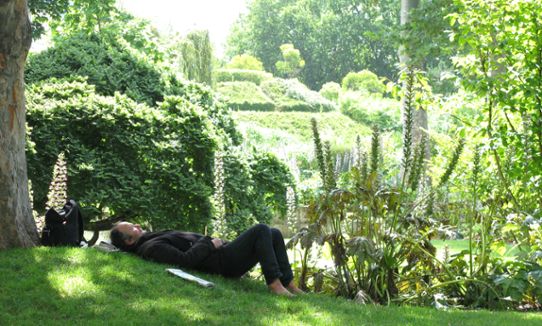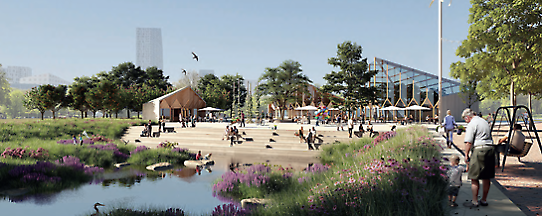
Method for climate adaptation in the planning stage
A changed climate means that we can expect rising sea levels and more periods of heavy precipitation, as well as more heatwaves. This represents an increased risk of flooding, which could destroy buildings, roads and public communications in towns. Following the cloudburst events of 2014, several thousand instances of flood damage were reported to insurance companies, at a cost of more than SEK 1 billion. The City of Malmö’s final bill for the 2014 cloudbursts is expected to total around SEK 160 million. The costs incurred as a result of extreme weather are expected to increase in the changed climate of the future.
Climate change is therefore something that needs to be taken into account in social planning. By adapting towns and cities to cope with the effects of a changed climate, the risks will be significantly reduced. The City of Malmö has chosen to climate-adapt the new Hyllie urban district by designing a large park that will alleviate the effects of a sudden cloudburst event. The City of Malmö decided to develop this park by announcing a contest, whereby architects were invited to submit their proposals. Project contests are one method that can be used in procurement processes. A project group in the City of Malmö was assigned responsibility for the contest for Hyllie’s largest park.

Experiences of contests as a method
By announcing a climate adaptation contest as part of the programme, the result was a well-planned, well-considered park built with consideration to natural conditions. The role of water is thoughtfully incorporated into the design of the park, and a large depression in the ground provides the opportunity for risk-spreading, with room to accommodate 1,000 m3 of surface runoff water, and with the ability for a further 6,000 m3 of water to be delayed in the event of a sudden cloudburst event.
The contest contributed to the inclusion of many different parties in the discussion, which helped to create not only a sense of participation but also a well-planned, multifunctional park. The surfaces that have been designed to manage cloudbursts can also be used for other purposes when there is no such heavy rain.
A contest makes it possible to promote and attract attention to a town or municipal area.
A contest represents a procurement procedure within the framework of the Public Procurement Act, which makes it possible to allow the winning architect to continue to develop their proposal into complete plans.
The main challenge of organising a contest is that it involves a lot of very intensive work. In the project contest for the park in Hyllie, 109 people were involved. This means that this method is more appropriate for larger projects, where it is particularly important that things are done properly.
More examples of climate adaptation
This is one of many examples of climate adaptation. There are more in the collection of ideas being built up by the Swedish National Knowledge Centre for Climate Change Adaptation at the Swedish Meteorological and Hydrological Institute (SMHI). The collection of examples has the aim of sharing experiences and providing ideas to everyone who works with climate adaptation. Examples describe concrete measures and challenges in several subject areas. They show how different actors have worked to adapt their activities to the climate changes that are already being noticed today and those that we cannot prevent in the future.